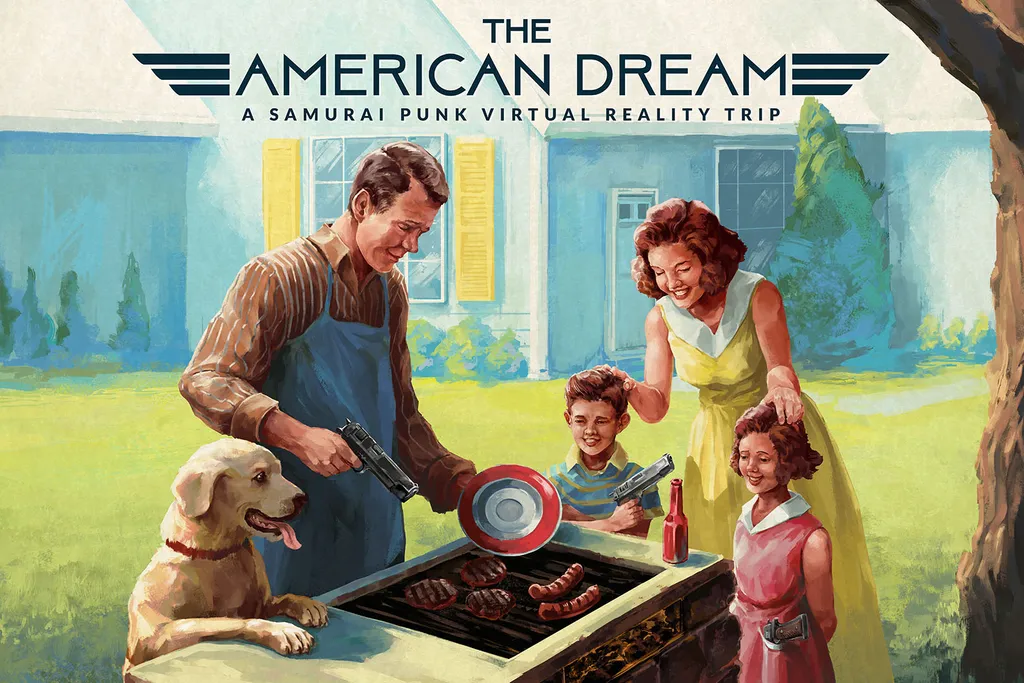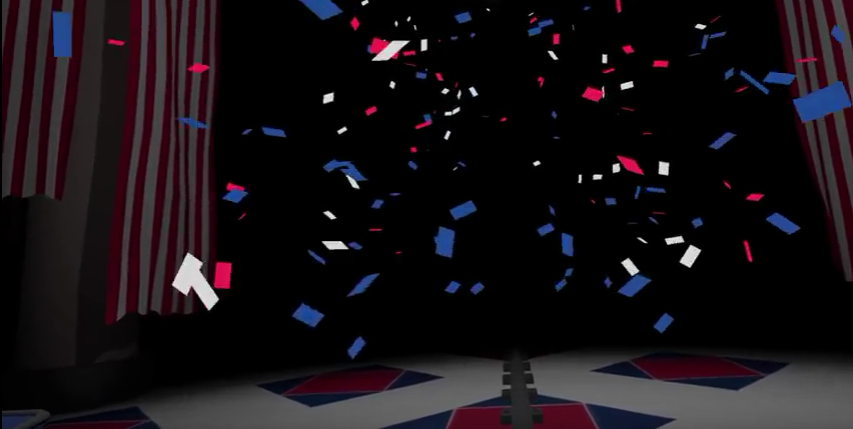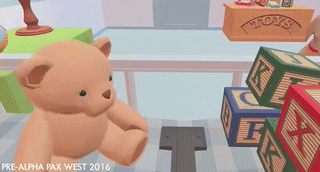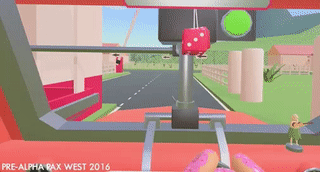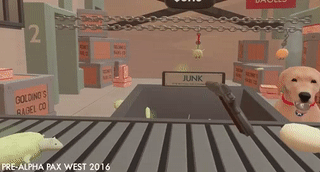Intelligent and poignant satire is incredibly difficult to pull off well. On the one hand, if you focus too much on what you’re mocking, it could be seen as a form of non-sarcastic reverence. Then on the other hand, if you simply mock something too openly, it could be seen as mere hatred without a point. Walking that fine line — finding the sweet, South Park or Simpsons-esque center — is no easy task.
Nevertheless, it’s a target Samurai Punk, the Melbourne-based developers of The American Dream, are still trying to hit. Gun culture in the United States is a debate of extremes, due especially to public events and outcry throughout the country. It’s a delicate situation that’s not easy to talk about.
By taking a page out of the book of parody, Samurai Punk is addressing the issue by taking the logic of, “We need guns!” as far as it could possibly go. Whether you support the ownership of firearms or not, you’ll need to enter this experience with a sense of humor and with an open mind.
“The idea for this title started with our musings internally about our relationship with guns not only through video games, but also through U.S. culture,” said Samurai Punk Co-Founder and Artist, Nicholas McDonnell. “In 2014 we made our first trip the U.S. and we made a lot of jokes about, ‘Haha, don’t get shot when you go there,’ and at the same time, we weren’t really joking. Australia is very safe. We wanted to tell a very simple joke about why America has so many guns. There are just so many. It’s kind of absurd. It’s a ridiculous number. So the joke is, to us, ‘What could they be doing with all of these guns? They must be using them to make food or something, right?’ so we just extrapolated from there. It became a perfect world where people use guns for everything.”
As we revealed when the game was announced before PAX, The American Dream emulates a 1950s setting in which gun manufacturers have created a demonstration of what life would be like if guns were there to solve all of our problems. As the game progresses, you advance through various stages of life.
The game’s website reads as follows:
“The world of The American Dream sets its sights on a future where guns are used for all manner of things like eating a meal, driving a car or working to provide for your family.
With weapons ranging from pistols to rifles and shotguns, you’ll learn how guns will take care of all your day-to-day needs! Bite the bullet and come on down, you’re guaranteed to have a blast every time at The American Dream!”
My demo begins in what resembles a museum hall of sorts, blasting confetti and triumphant music as I am slowly shepherded towards the end. Red, white, and blue banners are draped down the walls, evoking a sense of strong, albeit sarcastic, American patriotism. You know it’s satire immediately, as if the name and key art weren’t a giveaway, because of the cheesy narrator’s exaggerated accent.
His voice is belted into the environment by way of a megaphone in the mouth of what appears to be a golden retriever statue — an iconic, American dog, no doubt. An essential part to any happy family.
After the introductory spiel about the importance of guns in every day life, I’m sent to a level that’s representative of living as a small infant, complete with teddy bear and building blocks. The mobile rotating above my head contains bullets and gun magazines, because obviously it does.
After unloading a few rounds into the door to “knock” and call out to mommy dearest, a cardboard cutout of a ’50s housewife bursts into the room carrying my breakfast cereal. She stabs each piece with the barrel of her pistol to hold it out, pointed at my face, letting me reach forward and bite them.
Soon afterwards, it’s time for my lessons. I answer math and shape questions by shooting the right answer with my trusty hand cannons. If I run out of bullets, I press a button to either side to launch a magazine into the air, in slow-motion, and slam the stock of the gun into the magazine to complete the reload. McDonnell explains that you can easily “game” that mechanic by using it to slow down time and line up your shot with the gun in your other hand.
Other stages include driving to work, getting donuts at the drive-thru, and shooting holes in bagels at my traditional American factory worker assembly line job. Guns, donuts, and a hard day’s work: it doesn’t get much more American than that!
“Currently in this build, you begin the game as baby learning to use a gun for the first time,” said McDonnell. “Because they’re safe, right? You can use them at the age of three! Then you progress onward to teenaged years and adult life and it unfolds a world in which you would theoretically use guns for everything in life.”
As someone that grew up in Texas, surrounded by guns and gun culture, but now living in California — a state with decidedly more liberal stances on issues — The American Dream is a targeted and smart criticism of American culture. I like to think I have an open mind on a personal level, and I can appreciate the commentary on display here.
But that doesn’t mean everyone will. This is the sort of game that people will complain about and become offended by. People are going to misunderstand or refuse to understand the message, and that’s a shame. Similar to Thank You for Smoking, an excellent film that aggrandizes the tobacco industry in an attempt to tear it down, The American Dream tackles gun culture in a similar way.
Regardless of which side of the debate you fall on, it’s important to never hold anything so sacred as to regard it as beyond criticism. Samurai Punk is treading in dangerous waters, but it’s something that’s deserving of a conversation.
“This is satire, first and foremost,” explained McDonnell. “We’re delivering a lot of visual comedy, but the game has very mature undertones. When the finished game comes across, we hope people get the message. It’s a linear game with an explicit narrative. We’re not trying to ram anything home, or make a big statement, we just think there are a lot of guns in this country and that’s a bit concerning.”
The American Dream was being demoed on the Oculus Rift using Oculus Touch, but as we noted previously, I’d imagine it’s also coming to at least the HTC Vive, with the support of PS VR seeming possible. We don’t know an exact release date yet other than sometime in 2017. Samurai Punk is aiming for a 2-3 hour experience that can be completed in just a couple of sessions with planned intermissions.

